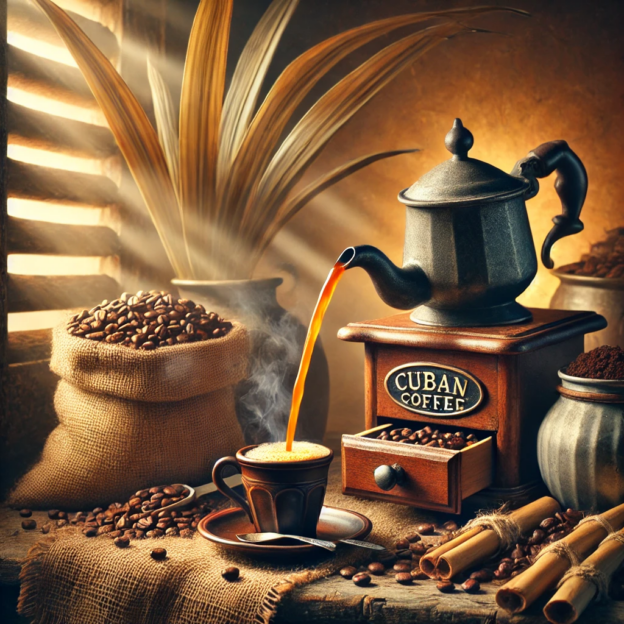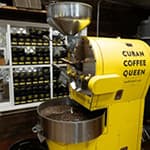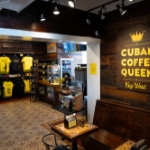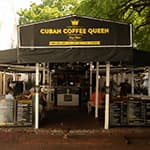
From Bean to Brew: The Best Coffee for Authentic Cuban Coffee
Ever been captivated by the intense aroma and deeply satisfying sweetness of Cuban coffee? It’s more than just a caffeine jolt; it’s a cultural touchstone, a daily ritual steeped in history and tradition. For coffee enthusiasts seeking to recreate that authentic Cuban coffee experience in their own kitchens, the journey begins with a fundamental question: what is the best coffee for Cuban coffee?
This ultimate guide to Cuban coffee will navigate you through the nuances of bean selection for Cuban coffee, the crucial role of traditional Cuban coffee brewing techniques (including the Moka pot), and the cultural context that elevates this beloved beverage. Prepare to unlock the secrets behind that iconic cafecito and embark on a flavorful adventure that will transform your coffee routine.
The Soul of Cuban Coffee: More Than Just a Strong Cup
Cuban coffee, often enjoyed as a potent Cuban espresso shot or the sweeter Cuban cafecito (espresso with demerara sugar whipped into the first drops), holds a unique place in the global coffee landscape. It’s a daily ritual, a social lubricant, and a taste of the island’s rich heritage. Each small cup carries the echoes of generations who have savored its intense flavor, a testament to resilience and a vibrant culture.
What sets authentic Cuban coffee apart from the myriad of brewing styles and bean origins? The answer lies in a confluence of factors, but the foundation is undeniably the coffee beans themselves. Choosing the right beans for Cuban coffee is the crucial first step in replicating that authentic taste. By understanding the characteristics that define traditional Cuban coffee beans, you can elevate your home brewing from ordinary to a truly exceptional experience.
Choosing the Best Cuban Coffee Beans: Arabica vs. Robusta
When venturing into the realm of sourcing coffee for Cuban coffee, you’ll encounter the familiar duo of Arabica and Robusta beans. While Arabica beans are globally lauded for their sweetness, complex aromatics, and smoother body, traditional Cuban coffee often embraces the bolder character of high-quality Robusta beans, or a carefully considered blend of both.
-
Arabica Beans for Cuban Coffee: Known for their higher acidity, intricate flavor profiles (ranging from floral and fruity to nutty and chocolatey), and generally lower caffeine content, Arabica beans offer a refined and elegant cup. While Cuba does cultivate Arabica in regions like the Sierra Maestra mountains, it’s not always the dominant bean in the traditionally strong and intense Cuban coffee profile.
-
Robusta Beans for Authentic Cuban Coffee: This variety packs a punch with its higher caffeine content, bolder and more bitter flavor, and robust body. It often exhibits earthy, chocolatey, and sometimes rubbery notes. High-quality Robusta contributes the characteristic strength and crema (the reddish-brown foam on top of Cuban espresso) that many associate with authentic Cuban coffee.
The key to understanding the “best” coffee for Cuban coffee lies in recognizing the historical and cultural preferences. Due to various economic and agricultural factors throughout Cuba’s history, Robusta beans have often been more readily available and affordable. This has led to a tradition of embracing its strength and using specific roasting and brewing methods to tame its bitterness and extract its rich, dark flavors.
Therefore, when seeking an authentic Cuban coffee experience at home, consider blends that incorporate a significant portion of high-quality Robusta beans. These blends often achieve the desired intensity, crema, and characteristic boldness. However, some modern interpretations and specialty Cuban-style coffees may also utilize carefully selected Arabica beans for a smoother yet still flavorful cup. Look for freshly roasted beans from reputable suppliers.
Sourcing Authentic Cuban Coffee Beans: Quality and Ethics
Regardless of the specific bean variety for your Cuban coffee, the importance of quality and ethical sourcing cannot be overstated. Look for freshly roasted beans, ideally within a few weeks of your purchase. Whole bean coffee retains its aroma and flavor much longer than pre-ground coffee.
Consider brands that prioritize fair trade practices and sustainable farming methods when buying Cuban coffee beans. This not only ensures a better quality product but also supports the livelihoods of coffee farmers and protects the environment.
How to Make Authentic Cuban Coffee at Home: The Moka Pot Method
Once you’ve selected your best coffee beans for Cuban coffee, the brewing method plays a pivotal role in achieving that authentic flavor. While modern espresso machines can certainly be used, the traditional method for brewing Cuban coffee involves the iconic Moka pot (also known as a stovetop espresso maker or greca).
Step-by-Step Guide to Brewing Cuban Coffee in a Moka Pot:
-
Grind: Grind your freshly roasted Cuban coffee beans to a fine consistency, similar to granulated sugar. This allows for optimal extraction in the Moka pot’s unique brewing process.
-
Water: Fill the bottom chamber of the Moka pot with hot water, just below the pressure valve. Using hot water helps to speed up the brewing process and prevent a metallic taste.
-
Coffee Grounds: Fill the filter basket with the finely ground Cuban coffee, leveling it gently without tamping it down.
-
Assembly: Screw the top chamber onto the base of the Moka pot, ensuring a tight seal.
-
Brewing: Place the Moka pot over medium heat. As the water heats, pressure will build, forcing it through the coffee grounds and into the top chamber.
-
Listen and Watch: Pay attention to the brewing sounds. Once you hear a sputtering or hissing sound, it indicates the brewing is nearing completion. Remove the Moka pot from the heat immediately to prevent a burnt taste in your Cuban coffee.
The Sweet Secret: Creating the Espumita for Your Cafecito
A hallmark of Cuban cafecito is the espumita, a thick, sweet crema created by whipping the first few drops of brewed Cuban espresso with demerara sugar.
-
As the first dark drops of Cuban espresso begin to emerge into the top chamber of your Moka pot (or from your espresso machine), immediately pour a small amount (about a teaspoon or two) into a separate, small cup.
-
Add a generous amount of demerara sugar (the traditional choice for Cuban coffee) to this small amount of espresso (adjust to your sweetness preference).
-
Vigorously whisk the sugar and espresso together using a small spoon or whisk until it forms a thick, light brown, and creamy foam – the espumita.
-
Pour the remaining brewed Cuban espresso into small cups and spoon the espumita generously over the top.
Elevating Your Cuban Coffee Experience: Pairings and Community Insights from the Cuban Coffee Queen
The enjoyment of authentic Cuban coffee is often intertwined with cultural traditions and culinary pairings. Consider savoring your Cuban cafecito alongside flaky pastelitos (Cuban pastries), the salty crunch of tostones (fried green plantains), or as the perfect accompaniment to a hearty Cuban sandwich.
For a truly authentic Cuban coffee and food experience, explore the Cuban Coffee Queen. More than just a resource for high-quality Cuban-style coffee beans, it’s a gateway to the heart of Cuban gastronomy.
Conclusion: Begin Your Authentic Cuban Coffee Adventure Today
The quest for the best coffee for authentic Cuban coffee is a rewarding journey of exploration and discovery. By understanding the characteristics of different coffee beans, embracing traditional Cuban brewing methods like the Moka pot, and perhaps even mastering the art of the espumita, you can recreate the rich flavors and cultural essence of Cuban coffee in your own home.
So, embark on your personal Cuban coffee adventure today. Experiment with different high-quality Robusta and Arabica blends, refine your Moka pot technique, and savor the unique warmth and intensity of this exceptional beverage. With each sip, you’ll not only be enjoying a delicious cup of Cuban coffee but also connecting with a vibrant tradition that continues to captivate coffee lovers around the world.





